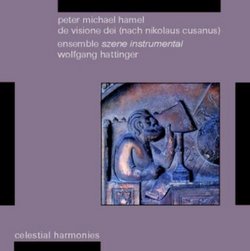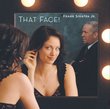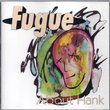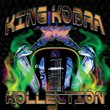| All Artists: Ensemble szene instrumental, Peter Michael Hamel, Wolfgang Hattinger Title: de visione dei (nach nikolaus cusanus) Members Wishing: 1 Total Copies: 0 Label: Celestial Harmonies Release Date: 11/6/2001 Genres: New Age, Classical Styles: Chamber Music, Historical Periods, Classical (c.1770-1830) Number of Discs: 1 SwapaCD Credits: 1 UPC: 013711319323 |
Search - Ensemble szene instrumental, Peter Michael Hamel, Wolfgang Hattinger :: de visione dei (nach nikolaus cusanus)
 | Ensemble szene instrumental, Peter Michael Hamel, Wolfgang Hattinger de visione dei (nach nikolaus cusanus) Genres: New Age, Classical
Peter Michael Hamel calls his latest composition to be issued on CD a "sacred musical theater"; it is - as one might expect from Peter Michael Hamel - a sacred piece on the one side inspired by the writings of the medie... more » |
Larger Image |
CD Details
Synopsis
Album Description
Peter Michael Hamel calls his latest composition to be issued on CD a "sacred musical theater"; it is - as one might expect from Peter Michael Hamel - a sacred piece on the one side inspired by the writings of the medieval German mystic Nikolaus Cusanus, and yet on the other side a non-denominational piece by a composer who looks at Buddhism and Christianity, indeed at all expressions of Faith, with equal interest and benefit. Scored for 8 brass, 2 percussion and organ, the work really has no parallel in the late 20th century literature, except maybe for a vague resemblance to Olivier Messiaen's Couleurs de la cite celeste (1964) if it weren't for the fact that Hamel uses an organ in the place of Messiaen's piano. And other than Messiaen's strict devotion to Catholicism, Hamel's relationship with religion is less dogmatic, more open to other streams of faith, and more spiritual in an overall sense. Thus the work is not your common avant-garde piece to be performed at a music festival for the critics and soon forgotten. It's a living piece, at times even relating to Hamel's improvisations as a keyboardist in quoting phrases in the score which listeners might identify as having originated some time ago in one of Hamel's many recordings of improvised music. Whilst the work is played from a score, it nevertheless retains an openness more often found in music not written down; it doesn't sound like a composed work but rather as a performed work, showing the extremely close and understanding attitude on the part of the mostly Austrian musicians and their young conductor, Wolfgang Hattinger, the founder and leader of Austria's remarkable ensemble szene instrumental which performed the world premiere in 1997.
Similar CDs
| Frank Jr Sinatra That Face Genres: Jazz, Pop, Broadway & Vocalists Label: Rhino / Wea | |
| Fugue About Hank Label: Deary Me | |
| King Kobra Kollection Genres: Pop, Rock Label: Great American Music | |

 Track Listings (5) - Disc #1
Track Listings (5) - Disc #1


